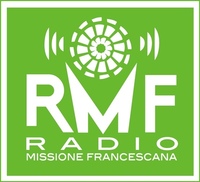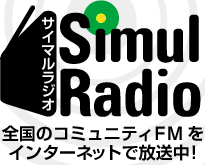Other Lace Grounds |  |
| A ground is an open bit of lace, which is used to contrast with denser patterns such as diamonds. Some are simple grounds, which look like net. These grounds are more complex. |
| Rose ground Triangular ground Bias ground Other diagonals | Honeycomb net Kat stitch Gaps Star ground |
 | Rose GroundRose ground gives you squares alternating with gaps. To start a rose ground, take 4 pairs of bobbins. Work the two left pairs in cloth stitch and twist, without a pin. Do the same to the right-hand two pairs. (If you are in the middle of rose ground, this will have been done already). Take the middle two pairs of bobbins, and work with half stitch, pin (at the top), half stitch to cover pin. Now take the two pairs on the left and do the same round the left-hand pin. Similarly, do the same with the two pairs on the right round the right-hand pin. Finally, take the middle two pairs, and do the last half stitch, bottom pin, half stitch. Finally work the two left pairs in a cloth stitch and twist (without a pin), and similarly for the two right pairs. The two pairs on the left will be the right-hand pairs for the next block on the left, and vice versa. Rose ground can be tricky to tighten, since the threads seem to go in odd places until it is finished. It's best to make sure that you don't have any big loops forming as you put each pin in. Then tighten the whole block when you've finished. It's also important that you don't get confused about the cross-overs between the stitches. You must cross the two pairs of threads on each side using cloth stitch and twist before you start a block of rose ground. However, once you are working rose ground, the cross-overs have already been done at the end of the previous block of rose ground. Don't do them again! I found that forgetting these cross-overs is the commonest mistake I made when starting. There should be one cross-over on each side (and only one) at the start and end of each rose ground square. |  |
 | The pricking pattern is on the left. If you find working rose ground tricky, you may prefer to draw on the pricking pattern where the threads actually go (see right). |  |
 | It can be tricky fitting rose ground alongside a footside, or any other vertical edge. You will have to do the odd Torchon ground stitch to fill in. Another type of rose ground is worked the same as this, except you use cloth stitch and twist, pin, cloth stitch and twist (see right), rather than half stitch, pin, half stitch, for each pin. You can also produce various effects by staggering where the rose grounds go, or combining rose ground and Torchon ground stitches. See my experiments with rose ground. The diamond mats have rose ground. |  |







  | Triangular GroundTo make one triangle, you need four pairs of bobbins, two pairs on each side. Make sure all pairs of bobbins are twisted. Work the two middle pairs of bobbins with cloth stitch, and then put the top pin in. Now work the right-hand pair of bobbins in cloth stitch through the other three pairs to the left. Put the next pin in. Work the same pair of bobbins in cloth stitch back through the other three. Put the bottom pin in between the middle two pairs of bobbins, and cover it by working the bobbins in cloth stitch. Twist all pairs of bobbins. You can make the triangles point to the right rather than to the left. The pricking pattern is on the left. If you find working triangular ground tricky, you may prefer to draw on the pricking pattern where the threads actually go (see right). One of the hearts designs has triangular ground. |   |







 | Bias GroundBias ground gives you diagonal stripes. It's difficult to show a unit of bias ground, since you work a whole strip at once. You have pairs of bobbins coming in from the left, twisted three times. The worker pair of bobbins (shown in blue) zigzag in cloth stitch across these bobbins, taking in two pairs of bobbins from left to right, and three pairs from right to left. You pick up one pair of bobbins before each pin on the left, and drop one pair off after each pin on the right. Each dropped-off pair is twisted three times as well. |  |
 | The pricking pattern is on the left. You can make the stripes slope the other way if you wish. The narrow zigzag lace has something similar to bias ground. |




Other diagonal grounds
 | Half stich diagonalYou can have bias or diagonal ground in half stitch. |  |
 | Holes diagonalThis is a design that was only half explained and I'm not sure that I got it right! The threads going across the diagonal are all half stitch, pin, half stitch. The other way, there are two pairs of threads. Each one does half stitch, pin, half stitch, then they cross over, with cloth stitch and twist. Then they do another half stitch, pin, half stitch, but now they do not cross over, but just carry onto the next pin. So alternately there are crossovers and non-cross-overs. You end up with an effect a little like rose ground, but with a slight bias of direction. |  |
 | Crossover diagonalThe last diagonal led to another idea, which was to cross over the two pairs of threads each time instead of every other time. This produces quite an emphatic diagonal, which is quick to do, symmetrical, and doesn't mess up the pairs of bobbins! |  |
 | Honeycomb NetHoneycomb net gives you an attractive pattern of hexagonal holes. It usually uses Bucks Point grid, which has patterns of holes in triangles rather than square diamonds. While working the lace, you must think in rows. Divide the bobbins up into groups of 4 pairs (8 bobbins). For the first row, work all the bobbins using honeycomb stitch (this will be two stitches for the 4 pairs). For the next row, leave the middle two pairs alone, and work the outer pairs outwards with bobbins to left and right, with honeycomb stitch. The third row works all bobbins again. The fourth row works the middle two pairs of bobbins, and leaves the outer bobbins alone. So alternate rows work every pair of bobbins, and the other rows work two pairs, leave one pair and so on. |  |
 | The pricking pattern is on the left. You may find it easier to work honeycomb if you mark in where the threads go, like here. This will tell you when to work a pair of bobbins, and when to leave a pair. |






 | Kat stitchKat stitch is also called star mesh. It is similar to Honeycomb net, with a simpler stitch at each pin but the same pattern of stitches. It also usually uses Bucks Point grid, which has patterns of holes in triangles rather than square diamonds. While working the lace, you must think in rows. Divide the bobbins up into groups of 4 pairs (8 bobbins). For the first row, work all the bobbins using half stitch, pin, half stitch (this will be two stitches for the 4 pairs). For the next row, leave the middle two pairs alone, and work the outer pairs outwards with bobbins to left and right, with half stitch, pin, half stitch. The third row works all bobbins again. The fourth row works the middle two pairs of bobbins, and leaves the outer bobbins alone. So alternate rows work every pairs of bobbins, and alternate rows work two pairs of bobbins, and leave one pair, and so on. Kat stitch is not supposed to show pin holes, so when you've worked two rows, take out the pins. |  |
 | The pricking pattern is on the left. You may find it easier to work Kat stitch if you mark in where the threads go, like here. This will tell you when to work a pair of bobbins, and when to leave a pair. |






Gaps
Kat stitch is usually worked using a Bucks Point grid, which shows up the hexagons and triangles of the pattermn well. However, it is possible to work it in a Torchon grid. The proportions will be different, but it will still work.
 | A variant is to put just one Kat stitch in. This will make an oval gap in Simple Torchon ground. Torchon ground can be rather dull in bulk, so these gaps add a little variety. I draw the thread lines on the pricking, to make it easier to work (see right - this has some Torchon ground stitches round as well). You can also use a line of these gaps for a narrow ribbon in wedding garters. |  |
Star ground
Star ground has a pattern of stars framed with diagonals of Torchon ground. These diagonals hold the threads making the star in place.
First work the two top diagonals of Torchon ground. There should be two pairs of bobbins coming in on each side, making 8 individual bobbins for the whole stitch.
 | The trick of this stitch is the start. There are four bobbins (two pairs) on each side. On the left side, you twist the middle two bobbins, leaving the outer two bobbins alone. Now do the same on the right side. This is a strange thing to do. It is normal to twist a pair of bobbins, but these bobbins belong to different pairs, and what's more, they are moving in the same direction. If the bobbins were in neat pairs at the start of the stitch, they will now be split up. Don't worry about this - they come back into pairs later! Take the top pair on the left, and work them in cloth stitch across the two pairs on the right. Now take the bottom pair on the left, and work them across the two pairs on the right. This means that the pairs have swapped over. (It is also exactly the same as working the pairs on the right acorss the pairs on the left.) Now work the two pairs on the left in a half stitch. Then do the same with the pairs on the right. A half stitch starts with swapping the middle two bobbins over, so this brings the bobbins back into order again. The second part of the half stitch are simple twists, and they finish the stitch off, ready for the diagonals of Torchon ground, completing the whole pattern. |  |
 | The pricking pattern is on the left. You may find it easier to work if you mark in where the threads go, like here. You will notice that they is no central pin hole. I wondered when first doing this pattern if one would be necessary, but found it wasn't. The threads seem rather a mess when being worked, like rose ground or spiders. However, once you have done the Torchon ground afterwards, you can pull gently on the threads to tighten the stitch, and it all pulls into place. If it worries you, then you can put a central pin in (it's in a similar place to a spider) and insert the pin after the first row of cloth stitch. |
 Work the top two diagonals in Torchon ground |  Twist middle two bobbins on each side |  Work top pair on left in cloth stitch across both pairs on right |  Work bottom pair on left in cloth stitch across both pairs on right |  Halfstitch on both sides |  Finish diagonals |





.jpg)























































































































.jpg)








.jpg)















































.jpg)





































































































No comments:
Post a Comment